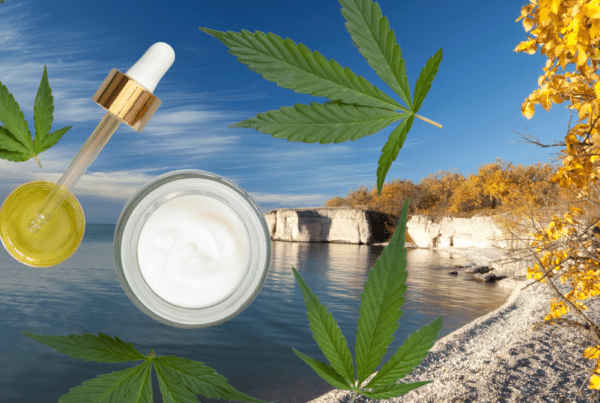It’s 2022, and there are currently only two countries in the world that have established recreational cannabis sales: Canada and the US. While each country has adopted a slightly different approach, both demonstrate that cannabis retail is not only safe, but here to stay.
After more than a decade of legal sales in Colorado and Washington and four years of national sales in Canada, let’s look at what an adult-use cannabis market can look like. And, where it’s headed in the not-so-distant future.
Cannabis Retail Market in Canada
Legalized in 2018, cannabis in Canada is a story of success. Globally, other countries may have decriminalized cannabis much earlier, but Canada is the first to legalize it at the federal level for recreational purposes.
Canada’s cannabis retail landscape has quickly evolved into an international model of success. In 2021, Canadians spent $2.1 billion (or close to $400 million monthly) on cannabis from more than 2,600 licensed stores. There also haven’t been increases in cannabis-related crime, injury, or issues related to underage access.
As the market grows, a seemingly never-ending number of products are available, including flower, concentrates, beverages, edibles, topicals, and more. Roughly 20 percent of Canadians in 2020 reported consuming cannabis, about five percent more than pre-legalization.
British Columbia and Ontario are still the two provinces with the most potential — with $554 million and $1.47 billion in sales, respectively. Both have the largest population centers and now the country’s fiercest competition for cannabis retail space.
The market is beginning to mature, with several large mergers and acquisitions closing in 2021. This includes Hexo’s purchase of 48North Cannabis Corporation, Thrive’s merger with Apheria, and Aurora Cannabis’ acquisition of TerraFarma.
Adult-Use Cannabis in the US
The US is a compelling case for cannabis retail, both in terms of medical and recreational applications. On the one hand, there are 37 states with at least some form of access to medical cannabis and 18 with full adult-use access. On the other hand, the federal government still lists cannabis as a Schedule 1 Drug. You’ll find it listed right alongside heroin and methylenedioxymethamphetamine (MDMA).
It’s a strange dichotomy that has evolved into a patchwork of cannabis-related legislation in America. Today, each state operates its own independent cannabis cultivation, sales, distribution, and consumption laws. Each is a stand-alone program with no interstate sales allowed.
The first states to legalize adult-use cannabis were Colorado and Washington in 2012. Then pro-cannabis legislation began spreading to other states in quick succession. As a result, more than a dozen states allow consumers to legally light up, typically managed similarly to tobacco and alcohol sales.
Even with the federal restrictions, cannabis sales are booming. Statista predicts annual sales surpassing $25 billion by 2025. If we zero in on California, that state alone was responsible for $5.2 billion from 2021. Colorado hit $2.2 billion in the same year. New York, a state just launching in the adult-use world, could rake in $4.6 billion in sales once it gets going.
With more states increasingly choosing their own legislative path toward legalization, the pressure is on for federal lawmakers to change the long-standing anti-cannabis rules on the books. Still, there is a the slow pace of movement on the Safe Banking Act. It could be another few years before widespread legalization occurs in the US.
What’s Next? A Look at the Evolution of Recreational Cannabis Around the World
First comes medical, then comes recreational. Several major countries have legal medical cannabis, including Germany, Israel, Australia, Thailand, and more.
Many countries first adopt cannabis for therapeutic applications but then, gradually warm up to the idea of adult-use options. Canada is one such example, but this is also the same pattern all markets transitioned through in the US.
As countries earn experience with cannabis as a medicine, it’s likely only a matter of time before it’s debated as a recreational add-on, and cannabis retail takes hold.
Canada and the US aside, Mexico and South Africa are the next contenders. Both have passed legalization but are waiting on full-scale implementation. Switzerland, the Netherlands, Luxembourg, Italy, and Germany are other countries to watch.
Canada and the US: Safe, Profitable, and Accessible Adult-Use Cannabis
When well regulated, cannabis is a safe recreational substance, much like alcohol. With testing, compliance standards, and taxation, cannabis sales benefit the consumer by taking it off the streets and society as a whole through tax revenues.
As Canada and major markets like Colorado and California have demonstrated, it’s a strategy that’s working — and crucially, working for everyone.
Omni Channel Solutions for Cannabis Retail Operators
Whether you are gearing up to open or in the initial planning stages, TechPOS offers an all-in-one solution for POS, digital signage, express checkout and more.
We’ve designed the TechPOS ecosystem to comply with Canadian cannabis regulations. Working closely with Provincial & Federal regulating authorities is deeply embedded into our roots.
We help you understand your customers, beat out the competition, and boost sales through an integrated hardware and software solution.





